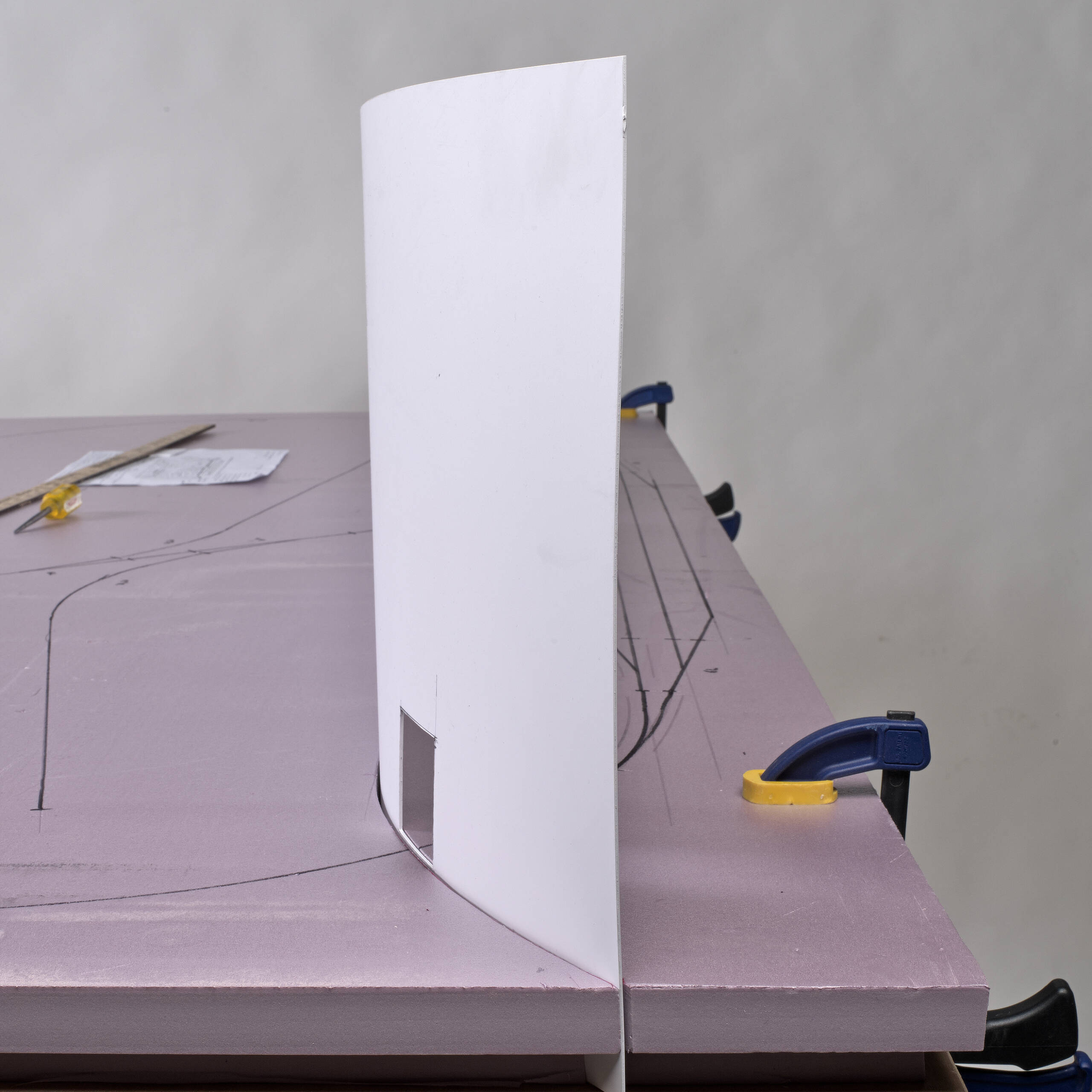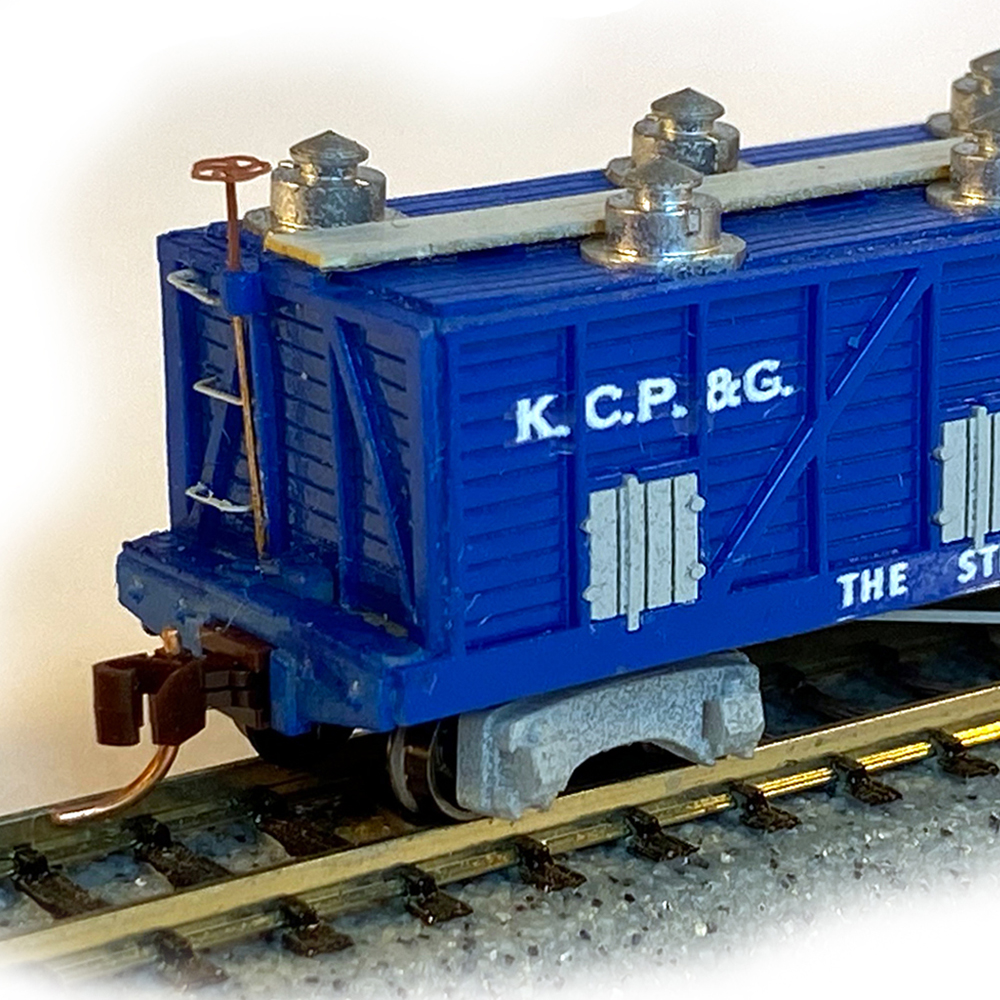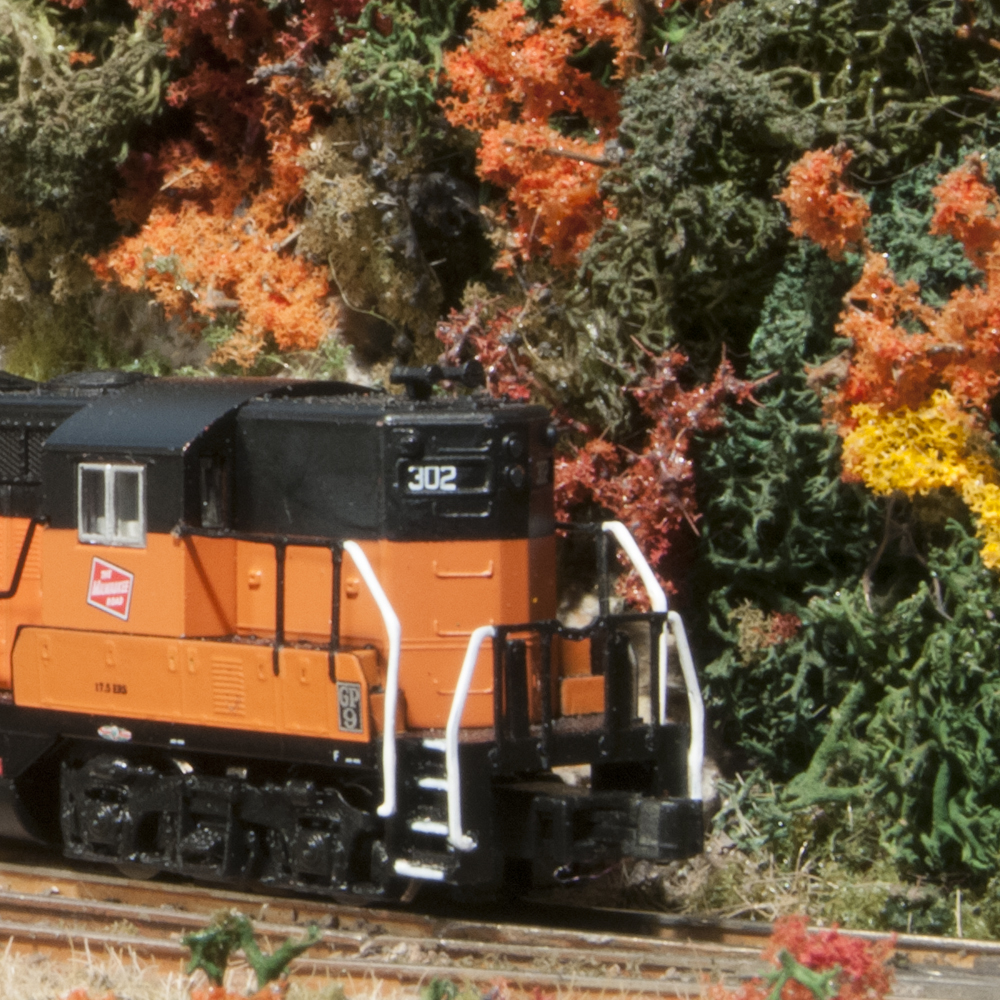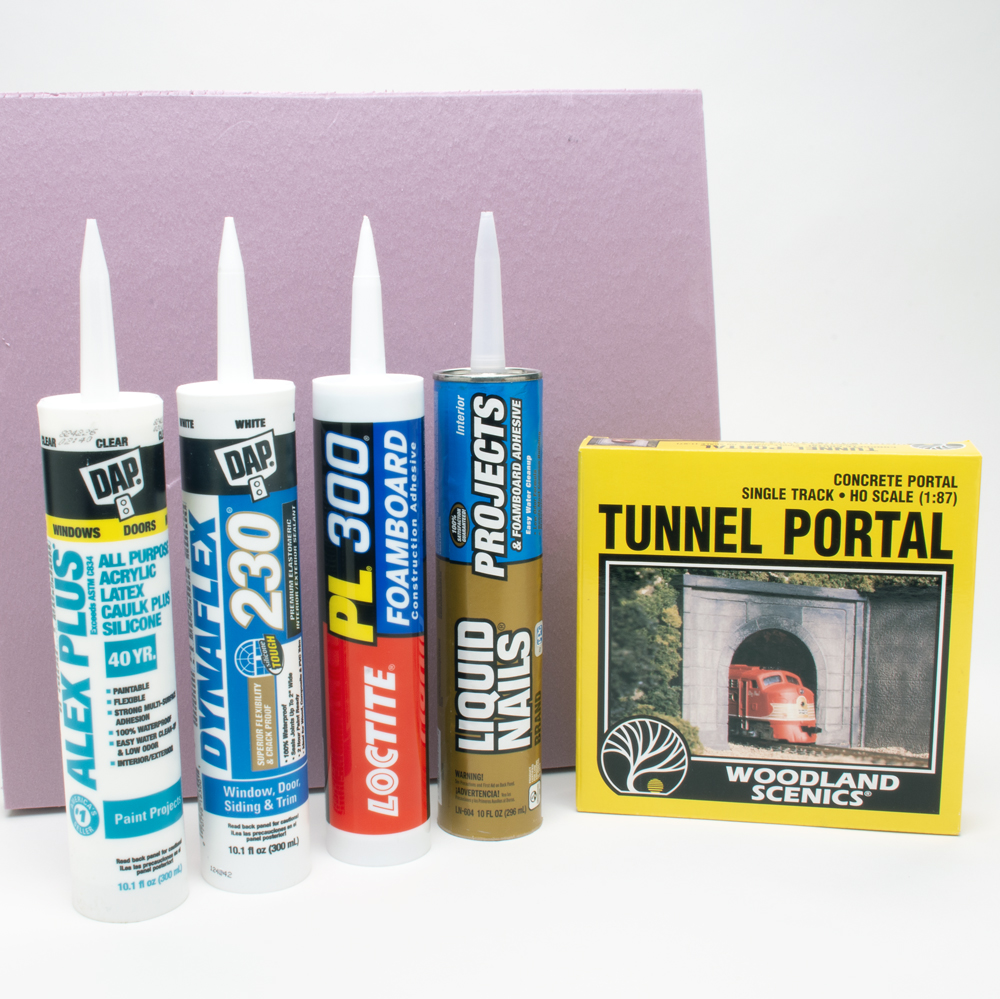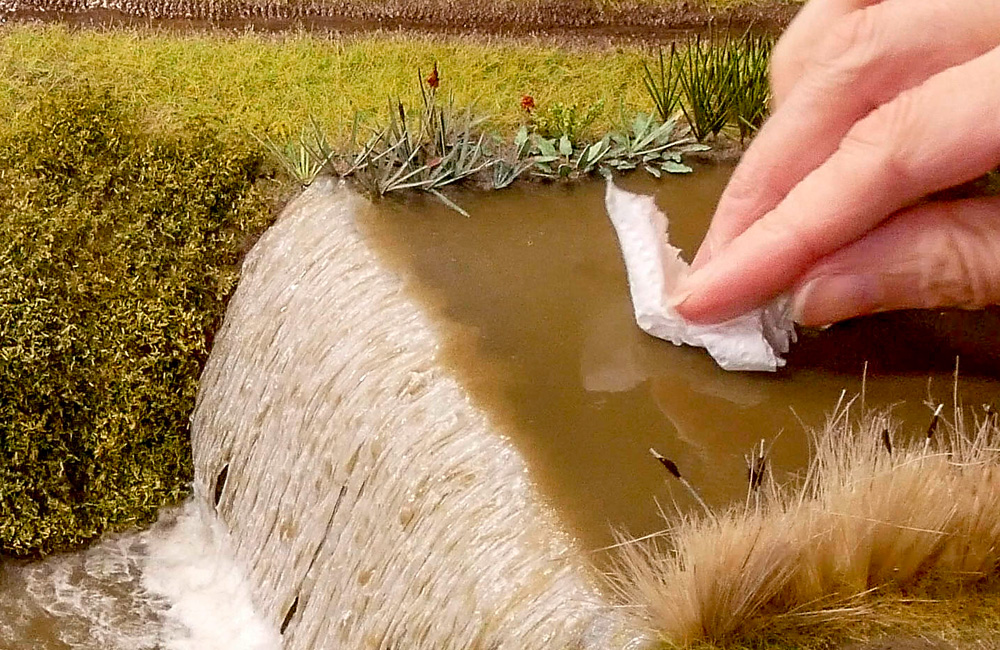
Q: Years ago, I used Liquitex Gloss Medium to create the water in two rivers on my layout. Now, I’ve noticed that they’re not as glossy as they once were. I periodically use a Woodland Scenics Dust Dabber and a wide, soft paintbrush to remove dust from the surface. How would you recommend that I clean the surface? Do you have any other suggestions on what I could do to restore water’s wet look? – Bart Helbling, Flower Mound, Texas
A: Dust is the eternal enemy when it comes to keeping our scenery looking realistic. Kathy Millatt, our scenery expert from across the pond, coincidentally wrote about sprucing up dusty and faded scenery for our February 2022 issue. As she suggests, finishing your train room – covering bare cement floors and closing in the ceiling – should go a long way to cutting down environmental dust. Covering the layout itself with a removable lid, plastic sheeting, a drop cloth, or the like can help, too. But nothing can completely protect a layout from dust.
Part of the problem is that if your basement is always on the cool side, like mine, popular water-modeling materials like resin or gloss medium might never fully cure, leaving a slightly soft surface that dust will sink into if left too long. So we have to be vigilant in removing it when we see it, not just before open houses or annual family holiday visits.
In her article, Kathy uses a vacuum nozzle, a soft paintbrush, and a cotton swab to dust the surface of her water. She also spritzes it with a spray bottle and wipes the surface with a paper towel, though she warns that it can scratch softer surfaces. Paper towels can also leave fibers behind, so a lint-free dust cloth might work better.
I wouldn’t use commercial cleaning products like window cleaner, because they might leave a residue or soften the surface. Use distilled water with just a few drops of dish detergent per full spray bottle to break the surface tension. Gently swab around with a soft paintbrush to get into the corners around the banks, then dab – don’t wipe – with a lint-free cloth to soak up the excess, and let it air dry. Gloss medium might turn white when it gets wet, but it will turn clear again as it re-hardens.
If your layout is old and your water features have permanently lost their luster, after a thorough cleaning you might want to brush on another thin layer of gloss medium to restore water’s wet look.
Send us your questions
Have a question about modeling, operation, or prototype railroads? Send it to us at AskTrains@Trains.com. Be sure to put “Ask MR” in the subject.






